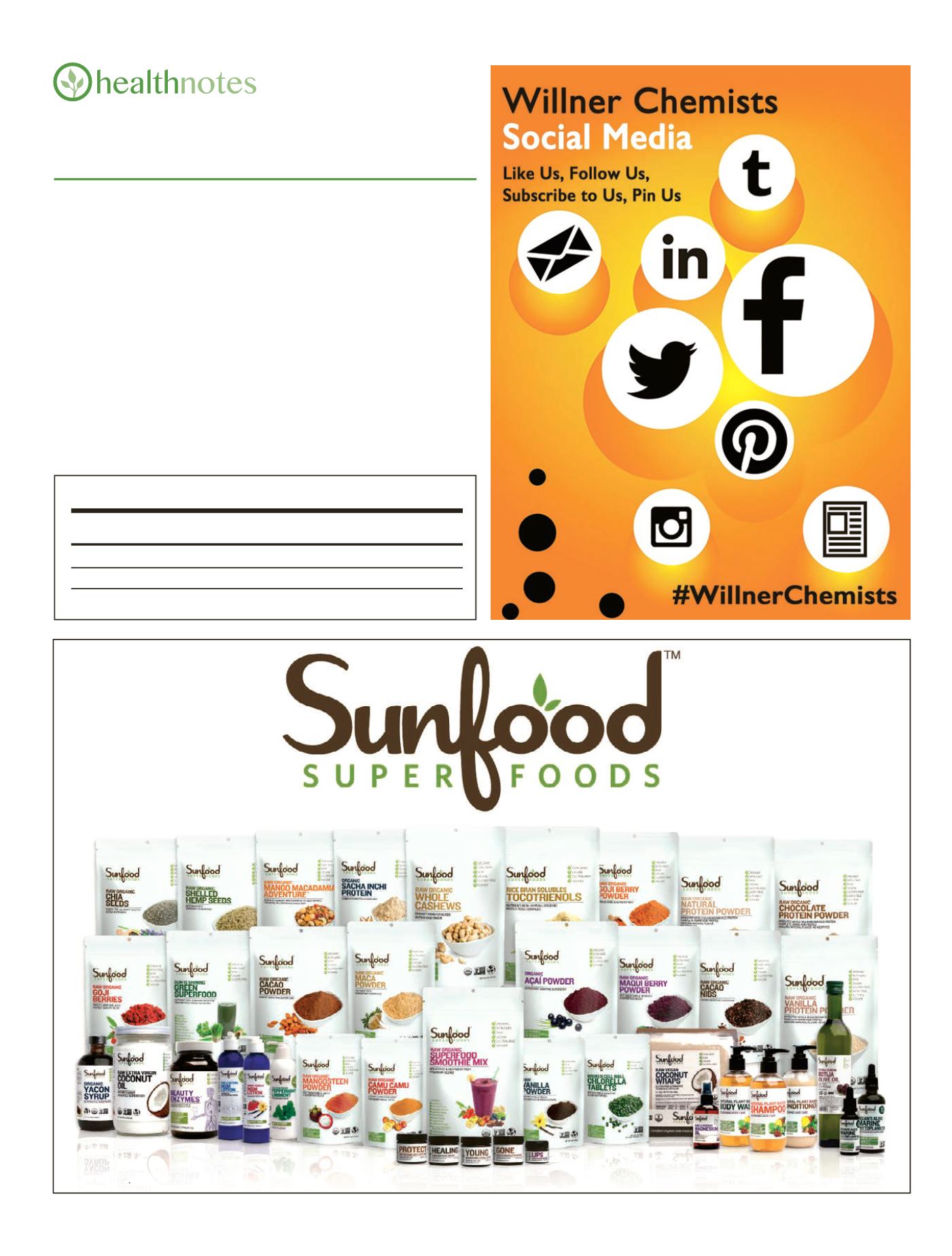
Page 75
To place an order, go to
or call (800) 633-1106
Since 1911
•
Willner Chemists: The Nutritional Supplement Professionals
Melatonin and MS
Multiple sclerosis (MS) is an autoimmune
disease of the central nervous system
where immune T-cells mistakenly attack
the protective sheath around nerve path-
ways, scrambling signals between the
brain and the body. Because MS relapses
can occur with seasonal changes, doctors
suspected a link to sunlight and vitamin D
levels. In this study, researchers found that
139 people with MS relapses had signifi-
cantly fewer symptoms during the fall and
winter. Doctors analyzed several factors
including environment, respiratory health,
sun exposure, and vitamin D. The one fac-
tor with a consistent link to MS symptoms
was melatonin, which the body produces
at higher levels in the fall and winter.
Continuing in the lab, melatonin influ-
enced two kinds of white blood cells:
“killer” T cells that attack, and “regulatory”
T cells that shut them off. Doctors said
melatonin has a protective effect, damp-
ening the immune response by keeping
killer T cells at bay. It is too early to rec-
ommend people with MS take melatonin,
but more research is under way.
Reference: Cell; 2015, Vol. 162, No. 6,
1338-52
Postmenopausal Women Lose
Fat Mass
Melatonin regulates the sleep/wake cycle
but may also have a positive effect on
body weight and energy metabolism. In
this study, 81 postmenopausal women
took 1 mg or 3 mg of melatonin nightly, or
a placebo. After one year, women who
had taken either dose of melatonin had
Vitamin Shopping IQ:
How to Read a Product Label
Supplement Facts
Serving Size: 2 Tablets
Servings per Container: 30
Amount Per Serving
% Daily Value
Calcium (as carbonate)
1200 mg
100
Directions: Suggested use: Recommended usage: 1 Tablet twice daily
By Sam Forbes CN
S
hopping for supplements can be an enjoy-
able experience, but sometimes confusing.
Because of the way products are labeled, it’s
not entirely clear what’s in the bottle. When
a product catches your eye, it’s usually
because of what’s on the front of the label,
however it’s the Supplement Facts on the
back which reveal exactly what you’re get-
ting. The greatest confusion is over the
potency. For an example let’s make up a
product, we’ll call it “Amazing Calcium”.
Suppose that it says “1200 MG” on the front
of the bottle. Does that mean each tablet
contains 1200 mg of calcium and what form
of calcium is it? By looking on the back of the
bottle where it says Supplement Facts, as
shown in the example below, you will get the
information you need to make an informed
decision. There, you will see Serving Size:
followed by the number of tablets in each
serving. In our example you will see that two
tablets make one serving. That means the
entire amount listed per serving would have
to be divided in half. If it had said three
tablets equal one serving, you would need to
divide the amount by three. So in fact, you’re
getting 600 mg of calcium per tablet, rather
than 1200 mg. We also know that the type of
calcium is from carbonate, not necessarily the
best form. The last bit of information you will
need are the directions for usage or suggested
usage that is written somewhere on the label.
This tells you how to properly take the sup-
plement for best results and how long one
bottle is going to last. If the directions for
Amazing Calcium are two tablets daily, then
you’d know a bottle of sixty tablets will last
thirty days. This is helpful information for
planning the next time you want to shop for
vitamins.


